What happened when Austin, Texas' telework ratio became the third highest in the United States? The data shows, safer roads, maybe. Despite breaking records for a massive population influx of new Austin residents, recent statistics released would support a finding that amount major Texas metros, Austin’s roadways may actually be getting safer relative to other Texas metros.
According to the U.S Census Bureau’s Household Pulse Survey, Texas reported that 38.9% Percentage of adults in households where at least one adult has substituted some or all of their typical in-person work for telework because of the coronavirus pandemic.
Also, as recently as January of 2023, at least 1,535,116 Texas Residents responded to the Census Bureau's Household Pulse survey and indicated that they had worked from home at least one day in the past week. For purposes of this analysis, and looking at accident rate trends across Texas, this study has reviewed the increase in work from home.
Study of Texas Car Accident Data and Work From Home Trends
Traffic data is obtained each year and reported with identifying characteristics related to driver action and error. The purpose of this study is to investigate the patterns and trends in car crash data combined with trends in work from home employment settings. Results from this study may help to better understand the strength of correlation between working from home and the prevalence of car accidents on Texas roadways.
Methods:
The study used data from various state and national data reporting agencies on car crashes that occurred in the United States over a seven year span from 2013 to 2020. The data included information on the type of crash (e.g. head-on, rear-end), the location of the crash (e.g. urban, rural), the manner of crash, and what was found to be a contributing factor. This research was coupled with data on population growth among the four major metropolitan areas in Texas, and data related to work from home statistics in all. The data was analyzed using descriptive statistics and regression analysis to identify patterns and relationships in the data.
Results:
The study found a correlation between the increase of Travis County residents working from home, and decrease in the amount of traffic accidents on Travis County roadways relative to the rest of the State of Texas. This may seem fairly straight forward. Less commuters on the roadway means less accidents, right? Not quite. Austin has seen a considerable increase in the reduction in car accidents relative to the rest of the State of Texas. Our research finds a correlation between the rate at which work from home has increased, and a disproportionate drop in accidents compared to the rest of the State of Texas.
Austin
Austin, Texas is the capital of the state and a thriving city known for its vibrant music and arts scene, as well as its lively food and nightlife culture. Located in the Hill Country region of Texas, Austin boasts a unique blend of natural beauty and urban sophistication.
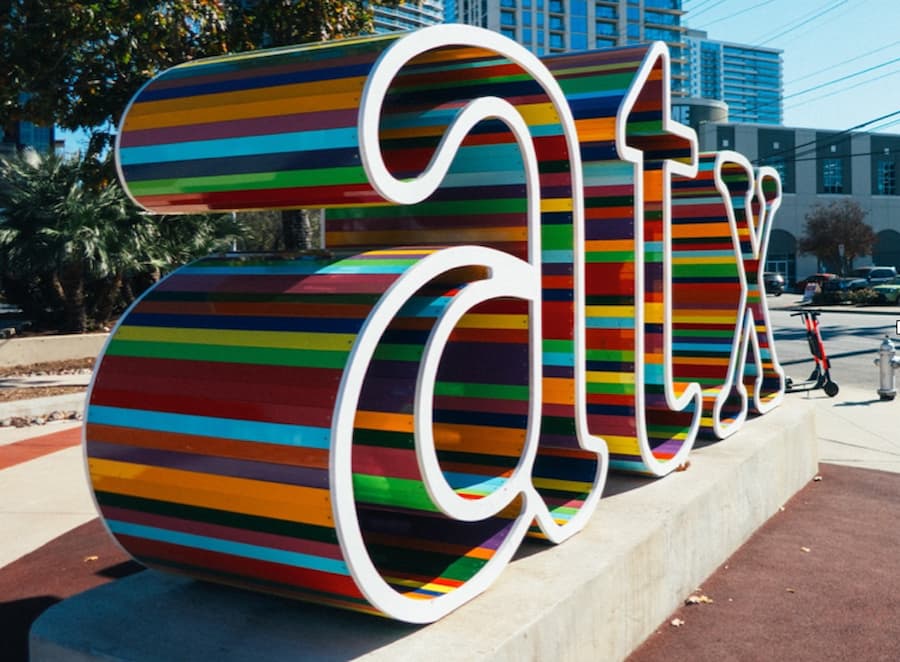
Austin Roadways
One of the defining features of Austin's landscape is its network of highways that crisscross the city. Austin is home to several major highways, including Interstates 35 and 45, which provide easy access to and from the city. These highways serve as major arteries for the city's transportation needs, connecting Austin to other major cities in Texas and beyond.
Interstate 35, also known as I-35, runs through the heart of Austin and is one of the busiest highways in the state. This highway is a vital economic engine for the city, connecting Austin to San Antonio, Dallas, and other cities in Texas and Mexico.
Another major highway in Austin is Interstate 45, which runs from Houston to Dallas and passes through Austin. This highway provides easy access to the city's many popular attractions, including the Texas State Capitol, the Austin Convention Center, and the University of Texas at Austin.
Austin, Texas Population Growth
Austin, Texas has experienced significant population growth in recent years, making it one of the fastest growing cities in the United States. In recent decades, Austin has transformed from a small college town to a major hub for technology, business, and entertainment. This growth has been driven by a number of factors, including the city's thriving economy, high quality of life, and a growing reputation as a hub for innovation and creativity.
As a result of this growth, Austin's population has increased dramatically. According to the U.S. Census Bureau, the city's population grew by over 2 million people between 2000 and 2020. This growth has brought a diverse mix of people to Austin, including young professionals, families, and retirees.
Work From Home in Austin, Texas
Working from home continues to provide considerable benefits for workers in Austin, Texas; with its mild climate and easy access to remote friendly businesses, there are countless opportunities to make the most out of at-home employment. This dovetails well with Austin’s technology-driven economy, where many jobs are available in engineering, computer programming, web design and more.
What's more, local employers often offer telecommuting options to foster an environment of flexibility and collaboration. These benefits come on top of the practical advantages that come from having a well-designed workspace in your own home: greater comfort throughout the day, close proximity to resources like food and equipment, and a quieter atmosphere for those especially important tasks. All of these considerations make working from the comfort of one’s home in Austin an ideal arrangement for many residents.
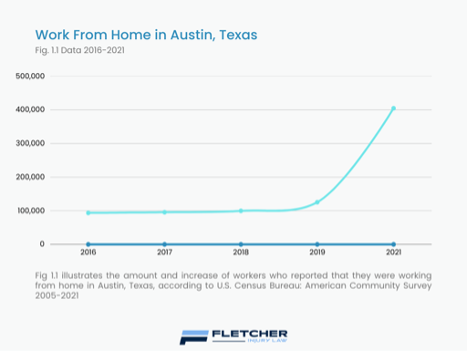
Fig 1.1 Work from Home Growth Austin. Study Link
Dallas, Texas
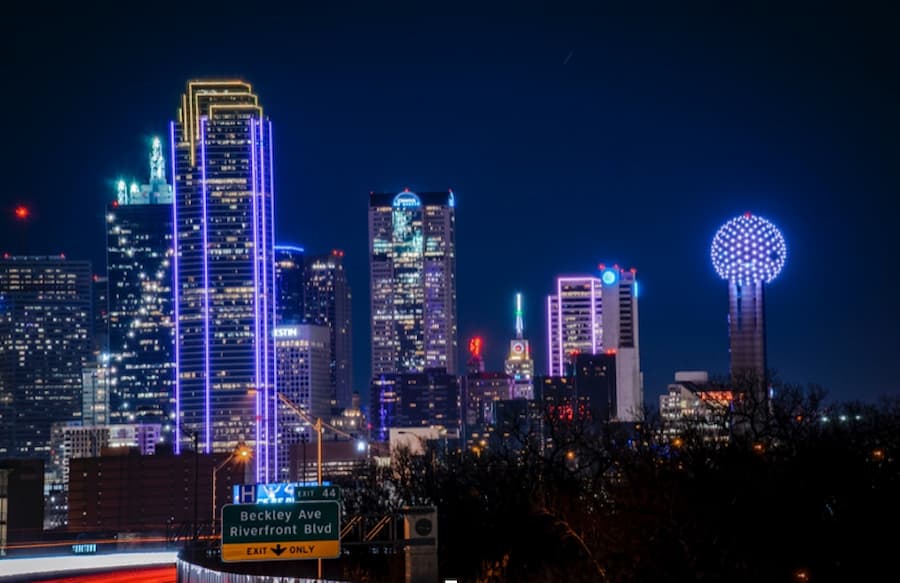
Dallas, Texas is a bustling metropolis located in the North Central region of the state. It is the ninth largest city in the United States and is the economic and cultural hub of the Dallas-Fort Worth metropolitan area, which is commonly referred to as the DFW Metroplex.
Dallas is known for its rich history, vibrant culture, and thriving economy. It is home to numerous world-class museums, art galleries, and cultural institutions, including the Dallas Museum of Art, the Nasher Sculpture Center, and the AT&T Performing Arts Center. In addition, the city is renowned for its delicious food, with a wide variety of restaurants serving up everything from classic Tex-Mex to modern fusion cuisine.
Dallas Roadways
Dallas is also a major transportation hub, with an extensive network of highways and airports that connect the city to other parts of the United States and the world. The city is home to several major highways, including Interstates 20, 30, 35E, and 45, as well as the Dallas North Tollway and the Lyndon B. Johnson Freeway.
The highways in Dallas play a crucial role in the city's transportation system, connecting its residents to the suburbs, other cities in Texas, and the rest of the country. For example, I-35E runs north and south through the city and is a major commercial corridor, linking Dallas to San Antonio and Austin to the south, and to Oklahoma and beyond to the north. The Dallas North Tollway runs from downtown Dallas to the northern suburbs and provides a fast and convenient route for motorists.
However, like many major cities, Dallas has faced challenges with traffic congestion and air pollution, particularly on its highways. To address these issues, the city has implemented several initiatives aimed at improving transportation, including the expansion of public transportation options, such as the Dallas Area Rapid Transit (DART) system, and the development of high-occupancy vehicle lanes, which are reserved for vehicles with multiple occupants and aim to encourage carpooling and reduce emissions.
Dallas Work From Home
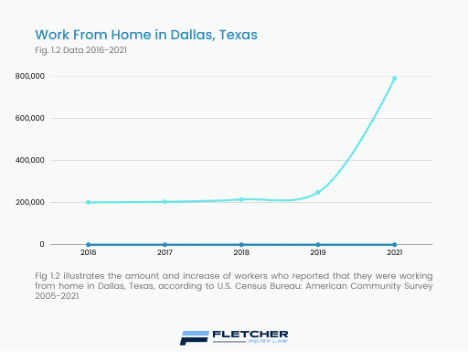
Fig 1.2 Work From Home Trend Dallas. Statistics Link.
Houston
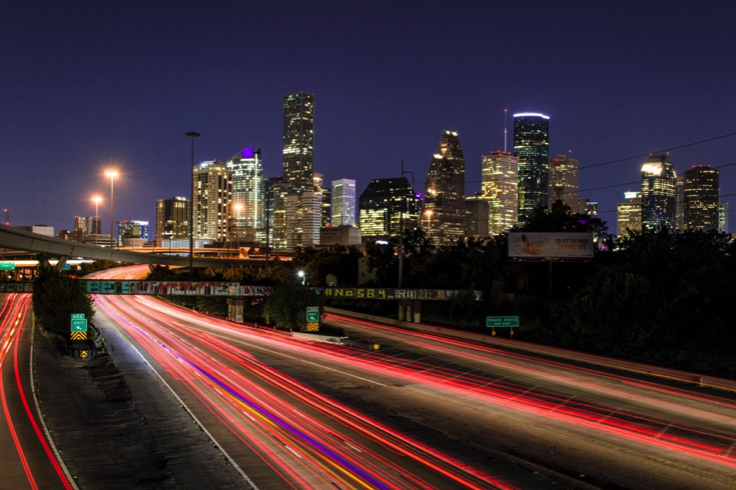
Houston, Texas is a unique city with a rich culture and history. Its vibrant energy makes it a fantastic place to visit. Located in southeast Texas, it's the fourth-largest city in the United States and home to more than two million people from around the world. There's a lot to do and see here including professional sports teams, world-renowned museums like the Museum of Fine Arts Houston and The Children's Museum of Houston as well as iconic landmarks such as the Lyndon B. Johnson Space Center and Galveston Island Beach. If you're looking for something unique, take a walking tour of its vibrant street art scene or get lost in its scenic parks like Hermann Park or the Buffalo Bayou Park Cistern. With its lively nightlife, great food, diverse culture offerings, there's something for everyone in Houston.
Houston Roadways
Houston is known for its extensive network of highways, with labyrinthine loops connecting all corners of the sprawling city. Major freeways like I-10, I-45, and US-59 give drivers access to hundreds of miles of roads totaling 3,000 within Houston's boundaries alone. Even more remarkably, the highway system within Harris County consists of nearly 11,000 miles in total. This extensive network of speedy interstates and looped expressways allow Houston residents an ease of access that was unparalleled when the highways first opened many decades ago. Today, as urban sprawl continues to grow outward from downtown Houston towards the suburbs, every day commute times are decreased due to these well connected roads.
Houston Work From Home
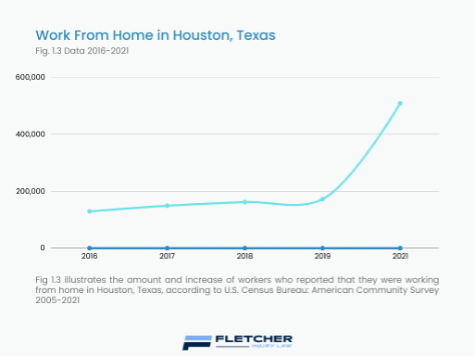
Fig 1.3 Work From Home Trends Houston. Statistics Link
San Antonio
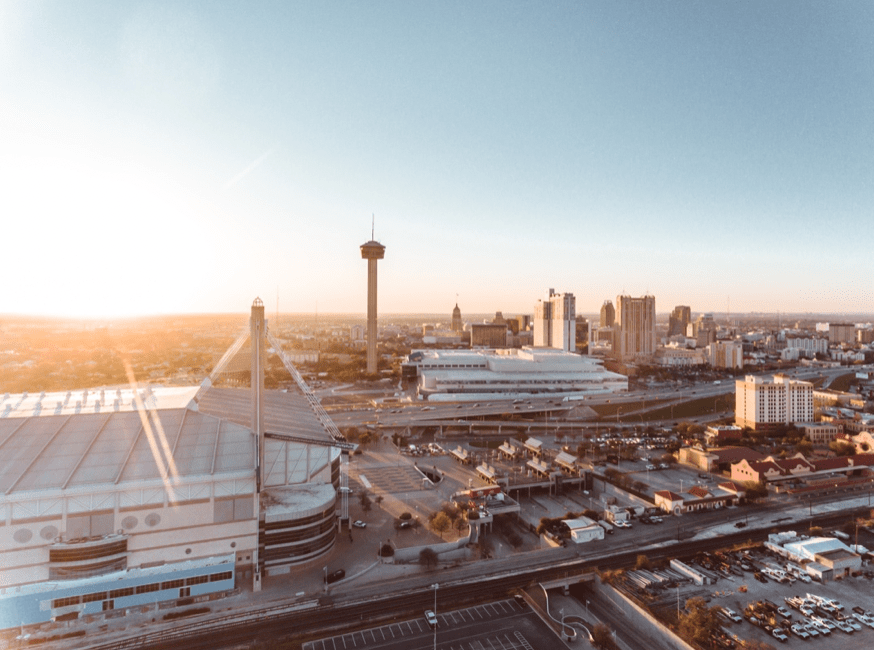
Located in south-central Texas, San Antonio is a vibrant city steeped in history and culture. As the seventh most populated city in the United States and home to the iconic Alamo, many travelers come to experience its lively atmosphere. From its captivating historical sites to its numerous parks and recreational activities, there is something for everyone in this charming metropolis. Whether you are looking for adventure or relaxation, San Antonio has plenty of attractions to stimulate your senses and create an unforgettable memory.
San Antonio Roadways
San Antonio, Texas has an abundance of highways that offer easy access from any point in the city. North-South routes include I-37, US281 and Loop 1604 while east-west routes comprise of IH10 and Loop 410. These highways provide excellent transportation opportunities throughout the bustling city and offer relief to the congestion caused by local traffic. To make travel even easier, several roads were recently widened with improved lighting at night for a smoother ride. As a result, San Antonio's highway infrastructure appears to make investments into reliable transportation for locals and travelers alike.
Work From Home In San Antonio, Texas
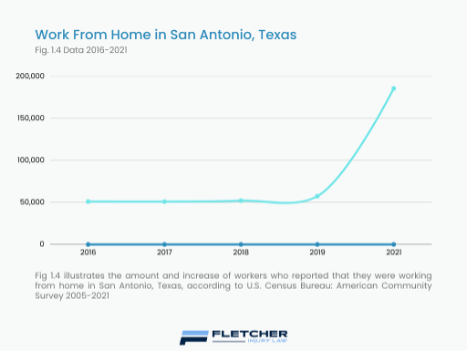
Fig 1.4 Work Form Home Trends San Antonio. Statistics Link.
Distracted Driving Accidents in Texas
Distracted driving wrecks are a major issue in Texas and have led to a significant number of accidents, injuries, and fatalities. Each year there are over 100,000 motor vehicle crashes in Texas due to distracted driving. This alarming statistic highlights the need for action to address this serious problem.
Distracted driving is usually considered as any activity that takes a driver's attention away from the road. This can include texting, using a cell phone, eating, drinking, applying makeup, and even adjusting the radio. Distracted driving is particularly dangerous because it takes a driver's eyes, hands, and mind off the road, increasing the risk of an accident.
One of the biggest contributors to distracted driving wrecks in Texas is the use of cell phones while driving. Texas law prohibits drivers from reading, writing, or sending text messages while behind the wheel. However, this law is often disregarded, leading to dangerous situations on the road. In addition, many drivers continue to engage in other forms of cell phone use, such as browsing the web or making calls, while driving.
In order to reduce the number of distracted driving wrecks in Texas, it is important to raise awareness of the issue and educate drivers on the dangers of distracted driving. Law enforcement agencies can also play a role in enforcing distracted driving laws, which can serve as a deterrent for drivers who might otherwise engage in this behavior.
There are also technology solutions that can help reduce distracted driving. For example, many cell phone companies offer apps that can block incoming messages and calls while the driver is behind the wheel. Additionally, vehicles equipped with advanced safety features, such as automatic emergency braking, lane departure warning, and forward collision warning, can help reduce the risk of accidents caused by distracted driving.
Accident Statistics in Texas
The research that we conducted into accident statistics in Austin compared with Texas Statewide data produced notable correlation. Our research focused on the growth in population in Travis County, where Austin is located, compared to other metros and the whole State of Texas. Interestingly, the rate at which accidents have decreased since the Covid-19 pandemic appears to have particularly impacted Travis County.
Texas Statewide Accident Statistics
Texas is the second most populous state in the United States, and with a growing population, it's no surprise that the number of car accidents has also increased. According to the Texas Department of Transportation (TxDOT), there were over 552,000 car accidents in the state in 2021.
Car accidents in Texas can be caused by a variety of factors, including reckless driving, distracted driving, and driving under the influence of drugs or alcohol. In 2020, over 16% of all car accidents in Texas were caused by distracted driving, making it a significant issue in the state.
The impact of car accidents in Texas extends beyond just the physical harm to those involved. The financial costs can be substantial, with an average cost of $9,000 per accident in 2020. This cost is due, in part, to medical expenses, property damage, and lost wages from missed work.
Travis County, Texas Accident Statistics

Fig 2.1 Texas Department of Transportation Crash Data
Population Growth Travis County

Fig. 2.2 Federal Reserve Bank Population Data Travis County.
Travis County, Texas, like much of Texas, has seen considerable and steady population growth each year since 2013. In total Travis County has added close to 200,000 new residents since the year 2013, and now is home to close to 1,300,000 Texans. With this influx of new residents, there has also been a heightened strain on Austin’s roadway infrastructure, leading to a higher prevalence of traffic congestion on roadways.
Austin Accident Rate Change Since 2013 VS Texas State Wide
An important figure from the statistics collected is focused on the rate at which accidents have increased or decreased since 2013. Since the year 2013, cities across Texas as a whole have seen a massive influx of new residents. In particular, Austin, Texas has seen a dramatic rise in population growth. However, despite this dramatic increase in population since 2013, Austin somehow seems to have benefited from a reduction in traffic accidents in recent years.
In fact, since 2014, despite gaining nearly 200,000 residents since the year 2013, Travis County now only has a 4.5% increase in the total amount of car accidents each year. Comparing this to the rest of the State of Texas, there is a major deviation from the trend in increased accident totals. Texas as a whole now has 23.8% more accidents per year than it did in the year 2013, whereas Travis County only has a 4.5% increase in accidents per year since 2013.
Austin Car Accident Totals Since 2013 Are Down More Than Texas Statewide
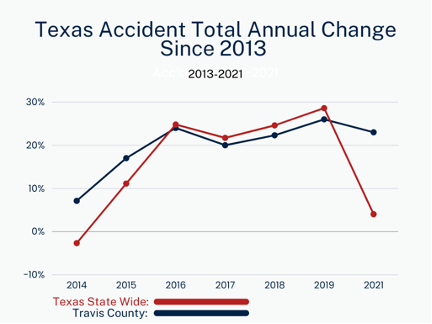
Fig 3.1 Total Accidents Travis County Vs. Texas Statewide
Austin’s increase in work from home may have reduced accidents relative to accidents statewide.
Our results indicate that the work from home environment has benefited Austin’s roadways by disproportionally reducing the number of accidents on the roadway, relative to other Texas metro areas analyzed. The data that we collected indicates that while there has been a reduction in accidents across Texas statewide, Austin’s particular work from home environment may have created a heightened benefit in that the rate at which accidents decreased surpassed that of other major Texas metro areas. We hope these findings will help inform Texans and their communities and provide some insight into a possible beneficial correlation that the growing trend of work from home has had on Austin roadways.